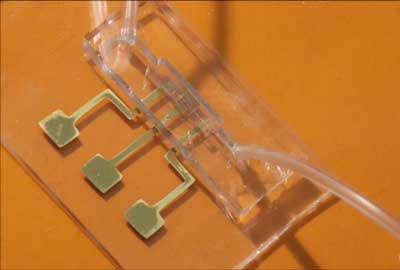A research team from Carnegie Mellon University reports the results of an advanced platform based on nanomaterials.
The nanomaterial-based biosensor is able to detect specific antibodies to SARS-CoV-2, the virus responsible for the Covid-19 pandemic, in seconds.
In addition to testing, the biosensor will help to accurately quantify patients' immunological response to new vaccines.
The results were published in the journal Advanced materials in a paper with the eloquent title: “Detection of Covid-19 antibodies in a few seconds via three-dimensional electrodes coated with reduced graphene oxide, nanoprinted by aerosol jet”.

How does the biosensor work?
The test platform identifies the presence of two of the virus's antibodies, the S1 spike protein and the receptor binding domain (RBD), in a very small (approximately 5 microliters) drop of blood.
Antibody concentrations can be extremely low and in any case detected below one picomolar (0,15 nanograms per milliliter).
Detection occurs through an electrochemical reaction within a portable microfluidic device that sends results almost immediately to a simple interface on a smartphone.
“We used the latest advances in materials and manufacturing such as 3D printing of nanoparticles to create a device that rapidly detects Covid-19 antibodies,” he says Rahul Panat, associate professor of mechanical engineering at Carnegie Mellon.
Biosensor produced in an innovative way
An additive manufacturing technology called aerosol jet 3D printing is responsible for the efficiency and accuracy of the test platform. Small, inexpensive electrodes are printed at the nanoscale using aerosol droplets that are thermally bonded together.
The process results in a rough and uneven surface that provides a greater surface area and an enhanced electrochemical reaction, to make it easier to capture antibodies.
The test has a very low error rate because the binding reaction between the antibody and antigen used in the device is highly selective.
An extraordinary ally
The results of this study come at a crucial moment in this pandemic. A device that instantly quantifies the immune response is critical.
Rapid diagnosis for the treatment and prevention of communicable diseases is a public health issue that goes beyond the current pandemic. The biosensor can be used for rapid detection of biomarkers for other infectious agents such as Ebola, HIV and Zika.

